Collaborative Learning Strategy & AI
TL;DR: Collaborative Learning is not a nice to have. It is a strategy to activate the collective intelligence inside your company. In this episode of Intelligence Amplifiers, Marko talks with learning strategist Pola Papadopoulou about how to move from solo content creation to collaborative learning systems and how AI can act as a co designer so humans can focus on empathy, context, and impact.
“If you feel scared, it is a sign you are walking in the right direction. The same is true for your learning strategy.”
From solo teacher to Collaborative Learning strategist
Pola did not start in L&D. She started in a small room in Greece teaching English grammar to kids and teenagers.
It looked like classic teaching. Prepare a lesson. Deliver it. Track progress. Repeat.
Over time she noticed something important. Many of her adult learners did not need more grammar. They needed confidence and the skills to show up in meetings. Things like how to interrupt respectfully, how to give feedback, or how to run a performance review in a second language.
That shift from “teaching content” to “supporting real behavior” is the same shift L and D teams need to make if they want Collaborative Learning to work.
Later, during her first masters in international and comparative education, Pola studied Rwanda’s education system. She looked at national level questions like
-
How many students get access to primary school
-
Which resources teachers need to succeed
-
What governments must do to support learning at scale
It is easy to see the parallel with high growth companies. You also need to think at system level, not course level. You also need teachers in the form of internal experts. You also worry about access, resources, and drop off.
That lens followed her into Spotify.
Spotify and the moment Collaborative Learning clicks
When Pola joined Spotify in 2019 she owned engineering onboarding. It was pre COVID. Programs were in person. Things were humming.
Then everything went online almost overnight.
Onboarding hundreds of engineers per month now required a different level of coordination. Time zones. Hiring spikes. Assets that had to move from rooms to screens.
Pola saw two truths at once:
-
The learning experience is not only the content
-
The learning experience is how you deliver and orchestrate it
She became the first face new engineers saw and the hub that connected
-
Newly hired engineers who provided feedback
-
Subject matter experts who owned key topics
-
Cross functional partners who helped fix “bugs” in the experience
This was Collaborative Learning in practice. Not as a slogan, but as a working system. People asked a question in Slack. That turned into a Q and A. Then into a session. Then into a reusable resource. Knowledge moved from heads to shared assets.
“Learning for everyone, by everyone” stops being a tagline when your experts willingly open up their work and invite others in.
What Collaborative Learning really is
Collaborative Learning is more than peer sessions and lunch and learns. At scale it is an operating model for knowledge.
You know you are doing Collaborative Learning when:
-
Experts are partners, not vendors. You co design with engineers, product managers, and customer teams, not just extract their slides.
-
Learning happens in many formats. Lunch and learns, Q and A sessions, office hours, short videos, internal docs, and structured programs all count.
-
Feedback loops are built in. Every cohort, every session, and every question becomes signal to improve the next experience.
-
Ownership is distributed. L and D is the orchestrator, not the bottleneck. Experts lead sessions. Teams own parts of the curriculum.
In Pola’s words, she went from working solo to being amazed that “people wanted to collaborate so quickly and share their knowledge.”
This is the foundation of collective intelligence inside companies. Experts capture how work really gets done. Others build on it. The value compounds.
Learning as strategy, not content factory
When Pola moved to Inriver, she made one big mindset shift explicit. Learning is a strategy conversation first, a content conversation second.
Her rule: always start with why.
Instead of “We need a course on this feature” she asks
-
What problem are we trying to solve
-
How will we know it is solved
-
What do we need people to do differently
Only then does she choose the right format. Sometimes a structured course. Sometimes a job aid. Sometimes a short video. Sometimes just a clearer workflow or better documentation.
She uses a form of backward design
-
Define the behaviors that matter
-
Decide how you will observe or measure them
-
Design the learning experience that gives people realistic practice
This is where Collaborative Learning shines. To create relevant scenarios or case studies you need the people who talk to customers every day. Customer success managers. Partner managers. Engineers on call. They give you the real stories and edge cases.
“The closer your learning assets are to real work, the less you have to ‘convince’ people to care.”
Learning as strategy also means you see learning as a product. You ship a minimum viable experience, gather data, iterate. But you do it without locking yourself into the slow cycles of traditional academic programs.
Where AI fits inside Collaborative Learning
AI is everywhere in L and D conversations right now. For Pola, the most useful frame is simple.
AI is a co designer, not the designer.
She uses AI in three main ways that map directly to Collaborative Learning.
1. Structuring and outlining faster
Instead of staring at a blank page, AI helps her:
-
Turn raw notes into a first outline
-
Draft learning objectives to refine
-
Suggest different flows for a course or pathway
This does not replace design expertise. It clears the underbrush so she can step into the strategist role faster.
2. Personalizing learning pathways
Many modern platforms now use AI to:
-
Recommend courses based on role or skills
-
Pull related content from a central hub
-
Suggest next steps based on what someone has completed
This is Collaborative Learning at scale. You still rely on internal experts to create high value content. AI simply routes the right content to the right person at the right time.
3. Giving humans time to be human
The bold claim:
“AI, used well, makes your learning experiences more human, not less.”
Why. Because AI cannot empathize. It cannot sit with a skeptical engineering manager and unpack what is really blocking adoption. What it can do is reduce the admin grind.
If AI handles:
-
First pass outlines
-
Simple copy cleanup
-
Basic reporting queries like “Who completed this module”
Then learning partners like Pola can spend their time on:
-
Real needs analysis conversations
-
Co design workshops with SMEs
-
Facilitated sessions where people learn from each other
AI builds the scaffolding so humans can do the high touch work where empathy, nuance, and trust matter most.
A practical playbook for L and D leaders
If you want to apply these lessons in your own org, here is a simple sequence.
1. Reframe your role
Stop introducing yourself as the content team. Start introducing yourself as a learning strategy partner. Your value is not slides. Your value is helping the business move specific needles with Collaborative Learning.
2. Map your internal experts
Create a simple inventory. Who are your go to people for onboarding, architecture, incident response, key customers, or internal tools. These are your future faculty. Treat them like partners, not volunteers who get tapped at the last minute.
3. Start with one program
Choose a high leverage use case. For many technical orgs this is engineering onboarding or a critical product enablement initiative.
Apply Pola’s approach
-
Start with why
-
Define the behaviors that matter
-
Co design with SMEs
-
Build in fast feedback loops
4. Use AI to remove friction, not to generate noise
Use AI to
-
Draft outlines and learning objectives
-
Suggest quiz questions or scenarios you can refine
-
Summarize feedback from learners
-
Answer routine reporting questions for managers
Avoid the temptation to auto generate entire courses from scratch. You already have high value tribal knowledge in your people and existing assets. Let AI help you connect and curate it.
5. Measure what actually matters
Move beyond completion rates. Track things like
-
Time to first pull request or first closed ticket
-
Customer outcomes for trained versus untrained cohorts
-
SME engagement and burnout levels
Tie Collaborative Learning directly to outcomes your leadership already cares about. Onboarding speed, ramp time, product adoption, or reduced repeat questions.
Do it scared
Pola’s closing advice to her younger self doubles as advice to every L and D leader who wants to step into Collaborative Learning and AI.
“Do it scared. If you feel uncomfortable, it is a good sign you are growing.”
Launching your first SME led program can feel risky. Trusting AI as a co designer can feel risky. Saying no to “just one more course” so you can focus on strategy can feel risky.
Do it anyway.
Because the future of learning in fast moving technical organizations will not be shaped by static content libraries. It will be shaped by teams that turn internal expertise into living, collaborative systems. AI will accelerate that shift. But the courage to redesign how learning works will still come from humans like you.
If you enjoyed this conversation with Pola Papadopoulou, make sure to explore our other episodes of Intelligence Amplifiers for more insights on learning strategy, AI, and the future of workplace knowledge.

